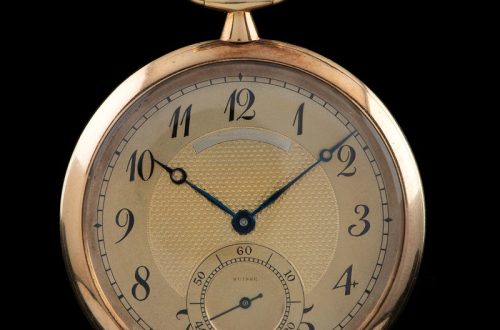In a world dominated by digital displays, mechanical watches retain a captivating allure. These intricate marvels transcend mere timekeeping, transforming into miniature symphonies of gears, springs, and meticulous craftsmanship. This article embarks on a journey through the fascinating realm of mechanical watches, exploring their history, iconic brands, and the artistry that fuels their enduring legacy.

Part 1: A Timeless Tradition: The History of Mechanical Watches
1. From Portable Sundials to Wristwatches: The Evolution of Timekeeping
The origins of mechanical watches can be traced back to 16th century Europe. Early timepieces were large, spring-powered devices worn around the neck or carried in pockets. Over time, advancements in miniaturization led to the development of portable watches and eventually wristwatches in the late 19th century. The invention of the wristwatch coincided with the rise of active lifestyles, making it a practical and stylish timekeeping accessory.
2. Beyond Functionality: The Rise of Haute Horlogerie
As watchmaking techniques advanced, mechanical watches grew beyond their traditional functional role. Artisans began integrating increasingly intricate complications such as moon phases and perpetual calendars into these timepieces, transforming them into exquisite works of art. The meticulous craftsmanship and dedication to precision brought about the rise of Haute Horlogerie, elevating watchmaking to the highest echelons of artistry and technical mastery. This elevated form of watchmaking, with its emphasis on the most refined techniques and the creation of exceptionally complex timepieces, has become the pinnacle of horological expertise. Today, Haute Horlogerie continues to captivate collectors and enthusiasts alike with its stunning fusion of mechanical innovation and artistic expression. The tradition and artistry that define Haute Horlogerie are a testament to the enduring allure and eternal fascination of mechanical watches, showcasing the steadfast commitment to excellence and creativity within the world of haute horology.

Part 2: The Heart of the Machine: Unveiling the Mechanics
1. The Powerhouse: The Mainspring and Gear Train
The mainspring serves as the very heart of a mechanical watch. This tightly wound coil stores potential energy. When the crown is wound, the mainspring is compressed. This stored energy is gradually released, powering the entire watch mechanism. The gear train acts as a meticulous network of interlocking gears. It transfers the unwinding energy of the mainspring throughout the watch movement. Each gear has a specific number of teeth. The size ratio between these gears determines the speed at which different parts of the watch rotate.
2. The Regulators: The Escapement and Balance Wheel
The escapement acts as the governor of the watch movement, regulating the release of energy from the mainspring and ensuring the watch ticks at a consistent rate. It’s a complex mechanism with two key components: the escape wheel and the pallet fork. The escapement allows one tooth of the escape wheel to pass at a time, providing a controlled release of energy that powers the ticking motion.
Paired with the hairspring, the balance wheel is the regulating heart of the watch. This precisely weighted wheel oscillates back and forth at a consistent frequency. The hairspring, a delicate spiral attached to the balance wheel, controls the speed of this oscillation. Any changes in temperature or position can affect the balance wheel’s oscillation, but the hairspring counteracts these changes, ensuring consistent timekeeping.

Part 3: A Collector’s Paradise: Exploring Renowned Brands
1. Swiss Legacy: Patek Philippe and Rolex
Patek Philippe, established in 1839, is widely regarded as the pinnacle of Swiss watchmaking. The brand’s unwavering commitment to quality and innovation has earned it a reputation for creating heirloom-worthy timepieces. Rolex, founded in 1905, is another Swiss powerhouse known for its robust construction and timeless design. Iconic collections like the Oyster, the first commercially successful waterproof wristwatch, and the Daytona, a chronograph favored by racing enthusiasts, have cemented Rolex’s status as a global luxury icon.
2. German Precision and Artistic Expression: A Lange & Söhne and Jaeger-LeCoultre
A Lange & Söhne, founded in 1845, is a German watchmaker renowned for its distinctive style and unwavering commitment to precision engineering. The Lange 1 collection, with its asymmetrical dial layout and oversized date window, is a testament to the brand’s innovative spirit. Jaeger-LeCoultre, established in 1833, boasts a rich history of innovation and invention. The Reverso collection, with its ingenious reversible case, exemplifies the brand’s ability to blend functionality with style.

Part 4: Beyond Timekeeping: The Enduring Allure of Mechanical Watches
1. A Celebration of Craftsmanship: Owning a Piece of History
Owning a mechanical watch goes beyond simply telling time. These timepieces are meticulously crafted works of art, showcasing exceptional finishing techniques and a dedication to detail that borders on obsession. The intricate mechanisms and meticulous craftsmanship evoke a sense of history and appreciation for human ingenuity. Many watchmakers employ generations-old techniques passed down through families, making each timepiece a unique embodiment of tradition.
2. An Heirloom for Generations: A Legacy of Investment
Generations can pass down well-maintained mechanical watches, making them treasured possessions. The inherent value and prestige associated with renowned brands, coupled with the limited production of certain models, can make mechanical watches sound investments. Unlike digital devices that become obsolete quickly, mechanical watches hold their value, and some models even appreciate over time. They become not just timepieces but tangible links to the past, carrying stories and memories for future generations.

3. A Statement of Individuality: A Watch for Every Personality
The vast array of mechanical watches available caters to diverse personalities and styles. From the classic elegance of a Patek Philippe dress watch to the bold functionality of a Rolex sports watch, there’s a timepiece that reflects the wearer’s unique character. The intricate details and the choice of materials like precious metals and exotic leathers all contribute to the individuality a mechanical watch can express. The rich history associated with different brands also plays a role.
4. A Connection to Tradition: A Timeless Passion
Owning a mechanical watch fosters a connection to a long and fascinating tradition. Watchmaking is a centuries-old craft that has constantly evolved, pushing the boundaries of precision and artistry. By choosing a mechanical watch, you become part of this legacy, appreciating the dedication and skill of generations of watchmakers who have brought these marvels of engineering to life.
In conclusion, mechanical watches offer more than just the ability to tell time. They are intricate works of art, testaments to human ingenuity, and cherished symbols of history and tradition. Owning a mechanical watch is an investment in quality, a celebration of craftsmanship, and a connection to a timeless passion. So, the next time you seek a timepiece, consider the allure of a mechanical watch – a miniature symphony waiting to grace your wrist and tell your story with every tick.


